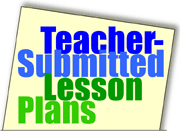art materials for illustrations
Lesson Plan
This activity, which students can do on their own after it is modeled for them, might make a nice alternative book report idea.
Read aloud a selected story. (For the purpose of example, this lesson uses the book Wild Horse Winter by Tetsuya Honda. Students like this appealing and beautifully illustrated story about wild horses surviving harsh winter conditions.) Stop to discuss vocabulary as needed. In addition, identify important story elements such a setting, characters, problem, and solution.
Gather students around chart paper or write on a chalkboard. On the board or chart, write the letters of the books title in a column going down the page. Invite students to suggest objects, events, or ideas from the story that begin with each letter of the book title. Next to each letter, write the possibilities that are discussed. (From time to time, reread together what has been written; in this way you will model an important writing strategy.) When the list is complete, decide which of the words or terms are best to use in the final version of the poem. Write the poem.
Wild Horse Winter
Winter
Island in Japan
Leaves are gone
Drifting snow
Hungry horses
Only hope is to get food
Raging blizzard
Steam from the horses
Easier to keep warm under the snow
When morning comes
Icicles on trees
No food
They travel
Excited to find the sea
Racing along the beach with full tummies!
Have students create illustrations to be included with poem. You might publish a Web page with the poem and selected student art on it. See the sample Web page for Wild Horse Winter.
Assessment
Students will select appropriate events and information. If you are using this activity to teach sequence, the events should appear in chronological order.
Submitted By
Marci McGowan, H. W. Mountz Elementary School in Spring Lake, New Jersey
Originally published 10/31/2002
Last updated 03/28/2008



To help us keep our Lesson Plan Database as current as possible, please e-mail us to report any links that are not working.




